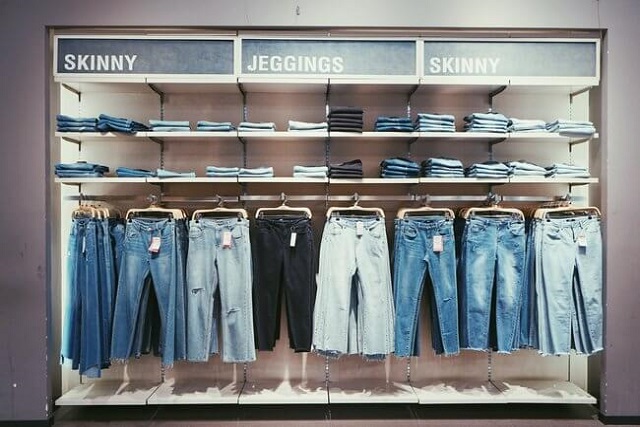Digital Clothing – A More Sustainable Alternative to Fashion Industry
Digital clothing is potentially the future of fashion technology and could well be an incredibly lucrative opportunity for businesses out there. It is arguably the natural reaction to the rise of fast fashion, increasing carbon footprint the industry has on the environment and one-off clothing items that have become prevalent across the whole industry.
So what are some solutions to fast fashion and just exactly what is virtual fashion? Essentially, it’s exactly what it sounds like: clothing that exists purely and solely in a digital form. To some, it may seem like a pointless idea, but to others, it could be the answer the important question of how can the fashion industry be more sustainable. Digital designs and items of clothing can be rendered onto an image of a person, showing what it would look like when worn but at no point would ever exist in the physical world.
Benefits of Digital Clothing
To many, this may seem like a ridiculous proposition, why would anyone pay for clothes that the couldn’t wear? It would be like buying a car you couldn’t drive or a holiday you couldn’t go on. However, there are some benefits to digital fashion that can have an incredible ripple effect throughout not just the business side of operations but to the wider world as a whole.
The fashion industry is incredibly damaging to the environment and is responsible for 10%of annual global carbon emissions. That is a truly staggering number that equates to an enormous amount of pollution that works out to be more than all international flights and maritime shipping emissions combined. If the pace of the emissions continues at this current rate, the fashion industry’s greenhouse gas emissions will surge to more than 50% by 2030. This is a problem that will affect everyone. no matter where there they are in the world. However, it isn’t just the manufacturing of clothing that impacts the environment as The Ellen MacArthur Foundation discovered, 85% of all textiles are thrown away each year, either ending up in a landfill or incinerated.
This is where digital clothing has its benefits. As it is all digital, there are no impacts as a result of manufacturing, transportation or waste products meaning it has next to no carbon footprint. A person will have a digital rendering of themselves in clothing that they could either not afford, would only wear once or are not able to be physically reproduced. This opens up the fashion world to everyone ensuring that it is not just something available to the super-wealthy. Not only it allows designers to be truly creative with their fashion concepts and lets consumers find items of clothing that represent who they are accurately without having to worry about long-lasting, damaging effects to the environment.

Future of Digital Clothing in 2020
With digital clothing being potentially a more sustainable alternative to the fashion industry, the future of retail 2020 has to offer could be wildly different from the current situation.
Scandinavian retailer Carlings are leading this possible digital clothing revolution. Customers were supplied with a photo that designers at Carlings had manipulated so it appeared that they themselves were dressed in their purely digital apparel. As a way to market and drive further intrigue in this concept, they hired several influencers to promote this collection on Instagram. While it may seem like a radical idea, Carlings sold out their digital clothing collection in just one week. Further collections from Carlings have already been announced and there is no sign that these ones will be any less successful moving forward.
The Emotional Aspect of Shopping
When it comes to marketing in the fashion industry, tapping into the emotional aspect is integral to success. Creating a strong emotional connection with your potential customers can turn them from just pure browsers of your site to a loyal base willing to purchase your products repeatedly. Digital fashion has a way to tap into this emotional aspect of shopping like few other industries can as it plays purely on the emotional feel of something as opposed to having to interact with a tangible object.
Advertising research reveals that the consumer’s emotional response to an ad has a far greater influence on their reported intent to buy a product than just the content of the ad itself. Essentially, in this instance, feelings play a more important role than information.
Studies show that positive emotions toward a brand have a far greater influence on consumer loyalty than perceived trust and other traditional judgments that are based solely on brand attributes. If you can elicit an emotionally engaged response from your customers, they are far more likely to want to buy from you, something being made apparent in regards to digital clothing.

Final Thoughts
While it may seem like a strange concept, digital clothing is set to become more prevalent over the next year and the next decade. There are several reasons that this form of clothing is set to increase, namely that it can:
- Massively reduce environmental impact
- Create new forms of exclusivity for consumers
- Enable creators to tell a story or be innovative without the need for an established brand
- Create new jobs within the fashion industry
Digital clothing will not completely overthrow the industry, but it will hopefully begin to curtail the reliance and prevalence of fast fashion, throwaway clothing and the increasing impact the business can have on the environment.
Subscribe To Us
Contributors
Categories
Subscribe To Us
Contributors
Categories

This website uses cookies so that we can provide you with the best user experience possible. Cookie information is stored in your browser and performs functions such as recognising you when you return to our website and helping our team to understand which sections of the website you find most interesting and useful. Third party cookies such as Google Analytics is also used on this site to provide analytics in order to better understand the user engagement on our site.
You can adjust all of your cookie settings by navigating the tabs on the left hand side.
Strictly Necessary Cookie should be enabled at all times so that we can save your preferences for cookie settings.
If you disable this cookie, we will not be able to save your preferences. This means that every time you visit this website you will need to enable or disable cookies again.







0.Comments